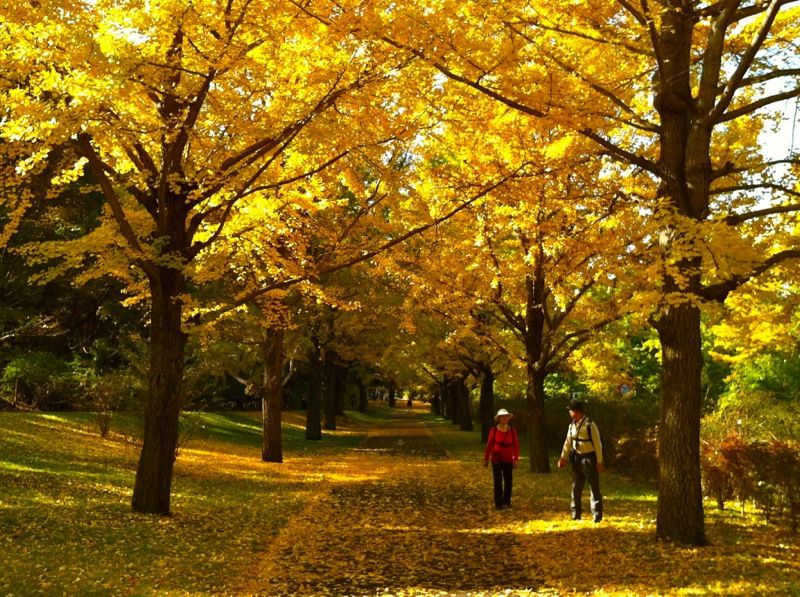EyeReport, Japan - Showakinen is a famous park in Tokyo For centuries, the people of Japan—and of the world
—have been impressed by the beauty and uniqueness of the ginkgo tree and its delicate, unusually-shaped leaves. The ginkgo leaf is a popular motif in Japanese art, ceramics, textiles, family crests, symbols or logos, literature, and poetry. The tree’s complete name, Ginkgo biloba, is due in part to its distinctive bi-lobed leaves. The origin of the name “ginkgo,” however, is unclear, and may be based on a misspelling by German botanist Engelbert Kaempfer, the first European to see a ginkgo (long believed extinct by Westerners) growing in a Japanese temple garden in 1690. The ginkgo, known as ichou or ichô in Japanese, is a “living fossil,” with fossils recognizably-related to modern ginkgo dating back 270 million years to the Permian era. The ginkgo tree’s longevity—possibly up to 1,500 years—is thought to be a trait that has helped the tree survive as a species for so long. The hearty ginkgo can even withstand the environmental stresses of urban areas. As a result, it is often planted as an ornamental tree in cities and suburbs.

